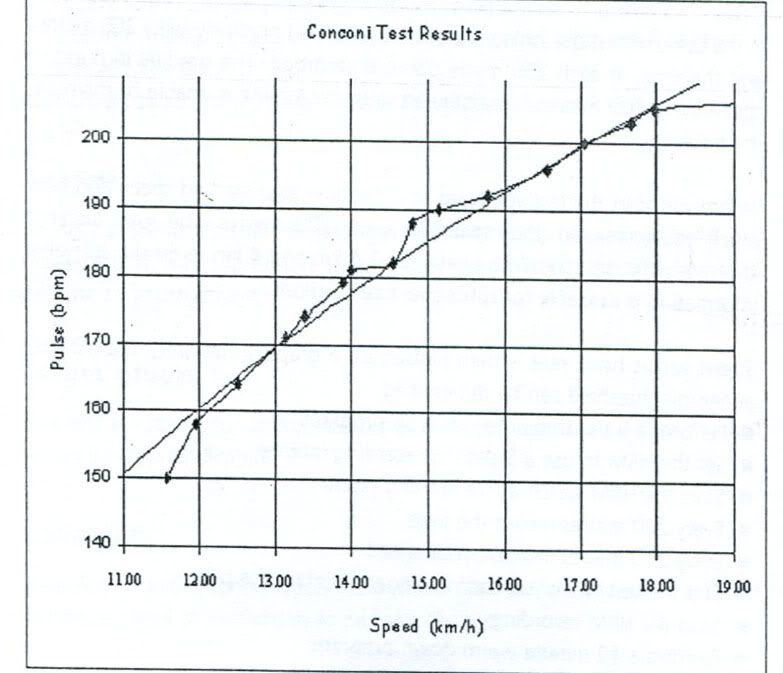Required resources
To perform the test you require:
- Heart Rate Monitor(HRM) which
records your heart rate for subsequent analysis
- 400 metre track or treadmill
- Stop watch
- Assistant to record your 200
metre times.
Conducting the Conconi test on a 400m track
In the Conconi test the athlete increases their speed gradually
every 200 metres and the time, at each 200 metre point, is recorded. This
gradual increase in speed every 200 metres is maintained until the athlete is
unable to maintain the pace.
Before you start the test you need to determine your starting speed
and how much you increment your speed by every 200 metres. The total distance covered by the test should be between 2.5km and
4km to ensure sufficient information is available for subsequent calculations.
Speed versus heart rate is then plotted on a graph from which the
athlete’s anaerobic threshold can be determined:
- Perform a 5-10 minute warm-up
program
- Set the HRM to use a 5 second
recording interval
- Start the HRM watch at the
starting point
- Every 200 metres record the time
- Every 200 metres increase your
speed
- End the test when you can no
longer maintain the pace
- Stop the HRM recording
- Perform a 10 minute warm down
program.
Conducting the Conconi test on a treadmill
- Perform a 5-10 minute warm-up
program
- Set the HRM to use a 5 second
recording interval
- Start the treadmill speed at the
required start speed
- Start the HRM stop watch
- Record the time every 200 minutes
- Increase the treadmill speed
every 200 metres by 0.5km/h
- End the test when you have
reached your maximum heart rate or you can continue no longer
- Stop the HRM recording
- Perform a 10 minute warm down
program
Calculation of anaerobic threshold
From the HRM determine the heart rate at each recorded time interval.
Determine the speed for each 200 metres and then for each 200 metres plot
speed versus heart rate on a graph. You will find the graph gradually rises to
start with and then flattens before rising again. This flattening in the graph
indicates the athlete’s anaerobic threshold. In the example conconi graph
below this flattening appears to be around 182 bpm.
Calculation of aerobic threshold
A good estimate for aerobich threshold has proved to be the
anaerobic threshold minus 20 bpm. In the example
above this would be 182 – 20 = 162 bpm.
Analysis
Analysis of the result is by comparing it with results of previous
tests. It is expected that, with appropriate training between each test, the
analysis would indicate an improvement.
Target group
This test is suitable for endurance athletes and players of
endurance sports(soccer, rugby…), but not for individuals where the test would
be contraindicated.
Reliability
Reliability would depend upon how strict the test is conducted and
the individual’s level of motivation to perform the test. It has been shown
that there is a lack of reliability in Conconi’s heart rate deflection point.
Validity
There are no published tables to relate results to potential
performance in competition.










0 коментара:
Постави коментар